Displacement, Triple Nexus, and sustainable peace

Two communities. One is the host, the other the guest. They live in the same place, next to each other. Their religious norms are identical. They speak nearly the same dialect. The hosts once received the guests with open arms and shared food and living quarters with the latter, who were desperately trying to escape the atrocities launched upon them by the government of their own country. By sheltering around a million persecuted Rohingya Muslims from neighbouring Myanmar since late 2017, local communities in southeast Bangladesh set an admirable example of generosity and compassion for the world. But why did the hosts' compassion fade with time? Why did the refugees' sense of gratitude toward the hosts disappear so fast? This turn of events intrigues the humanitarian community in Bangladesh.
Competition between the host and refugee communities over scarce resources breeds resentment. Social cohesion between the communities degrades, and the hosts' attitude towards the refugees turns negative over time, fuelling inter-community conflicts. This is evident in the context of Bangladesh's Rohingya refugee crisis, one of the world's largest displacement situations. There are host families in and around the 33 refugee camps in the country's southeastern part that house the Rohingya. When I observe interactions between the two communities, it feels as though these two groups of people live next to each other, but each on a separate, isolated island, either without any interactions or having no interest to interact. In addition to the one million new refugees, approximately 40,700 refugees have lived in two old camps for over three decades with little or no interaction with the host communities. The prevailing inter-community division continues to widen. Locals say that the refugees have overstayed their welcome and accuse them of stealing jobs with cheap labour and impeding development.
A plausible solution to the hosts' grievances in a migration-affected context is linking humanitarian programmes with development interventions, targeting the betterment of host communities. This has been emphasised within the scope of what is called the Double Nexus (humanitarian and development), which was proposed as part of the landmark Grand Bargain agreement between major donors and humanitarian organisations at the 2016 World Humanitarian Summit. The agreement stresses enhancing collaboration between humanitarian and development actors, taking into account the needs of both refugees and hosts at the onset of displacement, for a durable solution to protracted refugee crises around the world.
In the context of Bangladesh's refugee response, there is a consensus between the government and humanitarian agencies that at least 25 percent of the total humanitarian funds mobilised every year for Rohingya refugees shall be earmarked for development work in the receiving communities. UN agencies undertake more and more projects targeting the hosts. Though all the elements essential to a peaceful, cohesive relationship are already in place, tensions between the two communities frequently escalate, leading to increased insecurity and fear. When, as a camp manager, I try to unite them by bringing them to the table to settle disputes, particularly over land and resources, I rarely see them agree on the subject matters discussed, due mainly to a lack of mutual trust and confidence. This growing division puts pressure on the government.
To achieve the intended outcomes of the Double Nexus, promoting peace is a must-do. This necessitates a shift from the Double Nexus to a Triple Nexus (humanitarian, development, and peacebuilding). The Triple Nexus came into existence in 2017, with UN Secretary-General António Guterres introducing the "sustaining peace" element. However, a review of the existing literature reveals that the idea of incorporating peacebuilding as a component into humanitarian programming has been heavily criticised by the humanitarian community. One of the reasons the concept is derided is that critics of the Triple Nexus see peacebuilding as more about stabilisation and security than soft power. The original meaning of the term "peacebuilding," coined by Norwegian sociologist Johan Galtung, refers to a bottom-up approach to addressing structural causes of conflicts to create sustainable peace.
Ironically, peacebuilding has been associated with militarisation/securitisation ever since it became a familiar concept within the UN following former UN chief Boutros Boutros-Ghali's 1992 report, "An Agenda for Peace." Pointing to the concerns raised by humanitarian actors, critics of Triple Nexus argue that integration with peace may lead to the militarisation/securitisation of humanitarian programmes. Humanitarian actors, too, are concerned that if peacebuilding is integrated as a component, they will be asked to collaborate with militaries engaged in stabilisation, which would undermine the credibility of humanitarian aid guided by four key principles – humanity, impartiality, neutrality, and independence.
Emmanuel Tronc, Rob Grace, and Anaïde Nahikian of the Harvard Humanitarian Initiative recommend in their case study on Mali that, in some cases, humanitarian actors forcefully reject the Triple Nexus and distance themselves from practices that create confusion on the ground if concerns arise over an actual or perceived politicisation of aid. Their recommendation may have stemmed from an understanding that the Triple Nexus in Mali has led to the disintegration of sectors in a paradoxical reversal of its original purpose.
Critics of Triple Nexus refute the emerging concept as being too abstract and theoretical. Mali's case should, however, not be emblematic of contexts in other countries. South Sudan may serve as an example of the effectiveness of the Triple Nexus. A sense of improved cooperation prevails among stakeholders in the country, with the Triple Nexus resulting in a well-coordinated humanitarian response. Humanitarian actors in South Sudan do not perceive the humanitarian principles to be in danger, despite concerns prevailing elsewhere over a possible loss of credibility of the principles if humanitarian aid blends with peacebuilding.
It is undeniable that stabilisation in armed conflict situations requires the presence of militaries to function as peacebuilders while ensuring the safety of civilians. Yet, in non-armed conflict areas affected by a protracted refugee crisis, the Triple Nexus may bring about improved coordination among humanitarian, development, and peace actors to achieve the shared goal of sustainable peace. Bangladesh is not involved in an armed conflict with Myanmar, nor is the country fighting internally against any rebels over the Rohingya crisis. The country may be chosen as a perfect case study to evaluate the effectiveness of the nexus in a non-military, migration-affected context.
As the Triple Nexus is repetitively associated with militarisation, proponents of the concept name it a Civil Triple Nexus, perhaps in an effort to eliminate the growing scepticism over a potential militarisation of humanitarian aid. A review of the existing literature shows that the prevalent criticism of the nexus derives mainly from a lack of conceptual clarity and empirical evidence supporting its effectiveness in practice. Other challenges facing the concept include the lack of longer-term funding support. As a result, peacebuilding and social cohesion interventions that require longer-term funding commitments are often under-resourced. Describing Western donors' aid as a strictly short-term band-aid, scholars say that Western donors are reluctant to finance such long-term programmes for peacebuilding as they fear that they may become entangled in providing perennial support for basic services.
Despite criticism and scepticism, the Triple Nexus is gaining momentum at a time when resources to support protracted humanitarian operations are increasingly depleting. How a well-sequenced Triple Nexus contributes to peace and cohesion between hosts and refugees in a protracted refugee crisis by ensuring effective utilisation of resources and greater coordination among different stakeholders is now at the centre of attention.
Tanbir Uddin Arman has been extensively involved in the management, coordination, and delivery of humanitarian assistance to the Rohingya refugees in Bangladesh since the beginning of the Rohingya influx in 2017.


 For all latest news, follow The Daily Star's Google News channel.
For all latest news, follow The Daily Star's Google News channel. 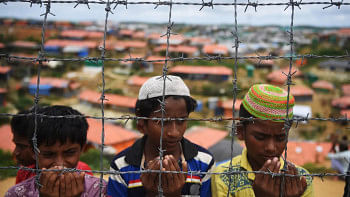

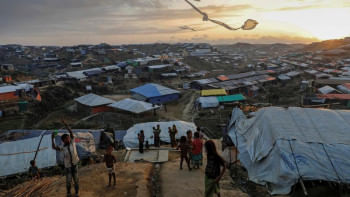



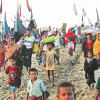

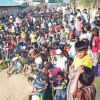
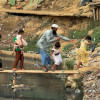

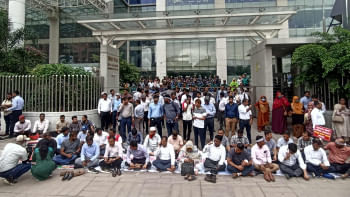
Comments